Page Contents
What is Dermatographism?
The term dermatographism (or Dermatographia) may be literally translated as the ability to write on a particular individual’s skin. However, it is medically referred to as dermatographic urticaria. It is not a life threatening disease (benign in nature) and is not contagious. Dermatographism can occur in people across its life span. However, it is most common in young adults with the peak incidence ranging from people ages twenty to thirty years of age.
Moreover, it can affect any anatomical part of the body but the scalp and the genital area is less frequently affected. There are various types of dermatographism such as red dermatographism, follicular dermatographism, familial dermatographism and exercised induced dermatographism among others. It has no race nor gender preference.
Pathophysiology
Urticaria, or more commonly known as hives is a type I hypersensitive allergic reaction of the skin. It is usually characterized by the rather sudden appearance of elevations in the affected area. These elevations are usually pinkish to reddish in color and are edematous. It causes a localized discomfort to the affected area and its size and shape vary. Generally, urticaria may affect any anatomical part of the body, especially mucous membranes. In addition, each urticaria or hive lasts for as short as a few minutes or as long as a few days or weeks before it completely fades away. However, if the urticaria or hives lasts for more than six weeks, the condition is already considered as chronic urticaria.
Dermatographism or dermatographic urticaria, on the other hand, is thought to occur when the mast cells that are present in the skin’s surface area release histamines in the absence of an antigen. The release of histamine is usually trigerred when the membrane-bound immunoglobulin E (IgE) of the mast cells is being activated. These mast cells in the skin have surrounding weak membranes that can be easily interrupted or break down if subjected to physical pressure such as scratching – which in turn causes allergic-like reaction. The resulting allergic-like reaction is generally the appearance of a red wheal due to the leakage in the small blood vessels that allow fluid to build up or accumulate in the skin.
We use the term “allergic-like” reaction because the resulting symptom (red wheal) is not directly caused by the presence of an antigen. Some people think that the red wheal or elevations in the skin are caused by its allergic reaction to the object that it has been exposed to. But actually, the red wheal occurred or presented due to the mechanical or physical pressure itself, such as the physical pressure in the act of scratching one’s skin. The red wheal that consequently appears is considered as a subset of urticaria that may or may not be accompanied by the feeling of itchiness.
In sum, the application of physical pressure on the skin initially results to the appearance of a red line (where the capillary is dilating) and then consequently, an axon-reflex flare occurs, accompanied by a broadening erythema (where the arterioles are dilating). After that, the appearance of a linear wheal occurs or the transudation of fluid/edema. Collectively, these series of events are referred to as the triple response of Lewis.
Moreover, people suffering from a condition called chronic urticaria may present some characteristics of Dermatographia. However, people that have true dermatographism only have physical pressure as the sole triggering factor for the appearance of symptoms.
Signs and Symptoms of Dermatographism
As mentioned above, the main sign and symptom of dermatographic urticaria is the presence of a red elevation on the surface of the skin, which is commonly referred to as a red wheal. Of course, these red wheals or elevations follow the shape or form of the perpetrating object’s stroke. Say for example, when you scratch on the skin horizontally, then the resulting red wheal follows the track of the scratch’s stroke, thereby forming a red horizontal elevation on the skin.
In some types of dermatographism, the signs and symptoms occur almost immediately after the contact or physical pressure has been applied to the skin’s surface. The physical pressure may be applied or initiated by a pen, stick or even fingernails. The resulting red wheal of this kind of dermatographism may disappear or fade away in a short period of time, may be only an hour or two. Other types of dermatographism, on the other hand, such as delayed pressure urticaria may result into an extended time of pain accompanied by a burning sensation that may last for a few hours after the contact or physical pressure has been initiated on the skin’s surface.
Dermatographism Pictures
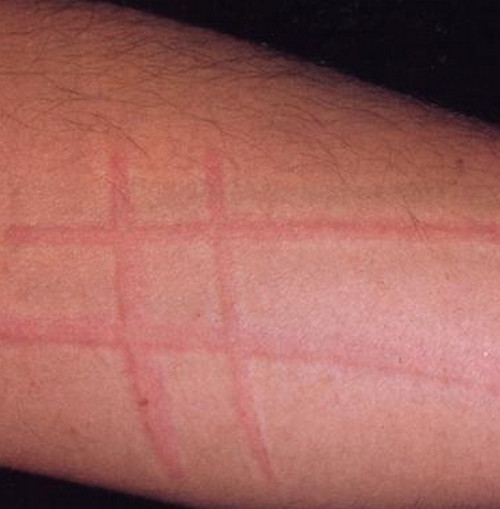
Picture 1 : Dermatographism – skin writing (# mark swelling on the forearm)

Picture 2 : Dermatographism at the back (due to scratching with four fingernails)
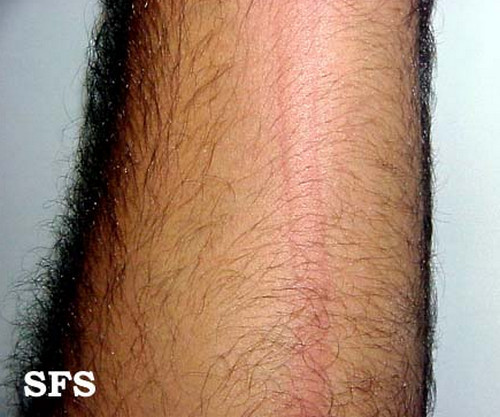
Picture 3 : Dermatographism (raised swelling with redness around it – mast cells in action)
image source: atlasdermatologico.com.
Causes of Dermatographism
Again, as mentioned above, dermatographism is generally caused by the application of physical pressure (such as stroking by a pen, stick or fingernails) on the skin causing the appearance of red wheal. Although it is said that dermatographism has no known definite reason why it occurs and it may last for a few years without relief. It may be solely attributed to physical pressure (as in true dermatographism) or it may be caused by an allergic antibody present or found in the object that has come in contact with the skin’s surface (as in cases of chronic urticaria).
Signs and symptoms may be brought about by a number of physical causes such as:
- Physical forces that causes stress to the skin’s surface,
- Too tight or abrasive clothings,
- Direct pressure from pointed things such as a stick, pen or even fingernails,
- Extreme temperatures (too much heat or too much cold), and;
- Ill-fitting watches, jewelries and eyeglasses.
Moreover, an increase in the incidence of dermatographism is seen or observed in pregnant women (mostly in their third trimester of pregnancy), menopausal women (especially on the onset) and in patients who have Behcet disease.
Differential Diagnosis and Diagnostic Tests
Dermatographism is a rather unusual skin condition (although it is very common) that is why there are instances when misdiagnosis occurs. Common examples of misdiagnosis are dermatographism misdiagnosed as Rosacea, scabies, and lupus to name a few. Ergo, careful conduction of diagnostic tests should be practiced in order to provide an accurate and correct diagnosis. In addition, it is also very important to go to a credible and appropriate physician for examination.
First off, forms of false dermatographism should be ruled out which are white, black and yellow dermatographism.
And then, the diagnosis or the diagnostic test is done by choosing an appropriate area of the body to be examined or tested. It is important to choose the correct site because areas that are often exposed such as the extremities are more likely less reactive than those areas that are often protected from extrinsic disturbances such as the back area. The chosen area is then stroked or applied a firm, moderate pressure with the use of an object, such as a pen. A stylus called dermographometer may be used to employ reproducible, graded pressure (usually 3600 g/cm2 ) and document test responses. However, a dermographometer is usually but not always limited to research purposes.
The test is positive when there is an appearance of a reddish and itchy elevation of the skin along the area where the skin is stroked or subjected to firm, physical pressure.
Frequently asked questions regarding dermatographism
1. Is there a permanent solution or cure for dermatographism?
Some modes of treatment offer a very promising chance of permanent solution for dermatographism. Example is the use of a recombinant humanized monoclonal antibody against immunoglobulin E (IgE) called Omalizumab. It is subcutaneously administered with an initial dosage of 150mg/mo and may be increased up to 300 mg/mo. However, there is still no definite cure to dermatographism.
2. Will dermatographism recur?
Dermatographism can recur if not treated properly. For instance, the use of light therapy reported the recurrence of dermatographism after a few months (maybe two to three) of completing treament. For some people, dermatographism has completely gone away for good after treatment. However, in some cases, the symptoms became more mild and the recurred. Bottom line is, the recurrence of dermatographism depends on the individual, as it varies from person to person.
3. Is dermatographism related with cancer?
Dermatographism may be a sign of an internal or systemic illness including but not limited to: carcinoma, leukemia, lymphoma, endocrine disorders, hypothyroidism, hyperthyroidism and neoplastic disorders among others.
4. Is there any future harm?
If dermatographism has been treated properly and accordingly, then there should be no worry for future harm. Although it may last for several years or if it stays with you for the rest of your life, there is a very small or maybe not at all chance of dermatographism developing as a severe, debilitating future harm. That is, of course, if the condition is attended properly.
5. How many percent of the world’s population is affected by dermatographism?
4 to 5 percent of the general population is affected by dermatographism.
6. Can we really get some diagnosis?
Yes of course, provided that the physician conducting the diagnostic test religiously follows the proper steps of the procedure. As it is said, dermatographism is a rather unusual condition but its diagnosis is not at all impossible to do.
Treatment for Dermatographism
Note: Treatment information in this article should not be taken without the aid of a medical practitioner. It is advisable that you consult your doctor prior to doing any treatment procedure. Avoid self-medication or self-treatment.
If a person’s urticaria is just very mild and does not hamper the patient’s activities of daily living then usually no treatment may be required. However, if the symptoms already cause discomforts then the following approach may be employed for the treatment of dermatographism:
Pharmacologic Approach
The drugs of choice used for the treatment of dermatographism are antihistamines. Antihistamines remain on the top of the line as long as pharmacological approach is involved. Particularly, H1 antihistamines are more frequently used. Although in some cases, a combination of two antihistamines may be required to provide a better solution to dermatographism. For the most part, the combination of H1 antagonists and H2 receptor antagonist yields good results. Example of second-generation antihistamine drugs are ceterizine, loratadine, desloratadine, levoceterizine and fexofenadine among others. Examples of first-generation antihistamine drugs, on the other hand, are diphenhydramine and hydroxyzine respectively. The course of treatment may last for as long as several months.
Moreover, Omalizumab (Xolair), a recombinant humanized monoclonal antibody against immunoglobulin E (IgE) has been very efffective in treating patients with physical urticaria that includes symptomatic dermatographism. It even shows total symptom resolution after a few days from the first injection. It acts by stopping allergic response through reduction of mediator release.
Light Therapy
Oral psoralen plus UV-A phototherapy and narrowband ultraviolet (UV)-B light therapy has also been used for the treatment of dermatographism. However, it has been reported that dermatographism recurs even after only two to three months after completion of light therapy.
Alternative Approach to Treatment
In Asia, the use of acupuncture and Chinese herbs or herbal decoctions has been practiced since the ancient times. Although there are no approved therapeutic claims, it is still being widely used as a form of treatment for physical urticaria and dermatographism. The research studies that have been conducted regarding acupuncture and Chinese herbs were inconclusive and relief of symptoms is thought to be attributed to a phenomenon called placebo effect. This is mainly because the trials conducted do not include a controlled group.
In addition, ayurvedic practitioners advised the consumption of watermelon and intake of coriander milk or cilantro as an effective way to cool the heat and stop itching.
Home Remedies or Natural Remedies
Dermatographism may be accompanied by itching or pruritus, therefore, keeping the area cleaned is one way of alleviating symptoms of dermatographism. Moreover, the use of hypoallergenic or biodegradable soap or body wash may reduce the feeling of itchiness. Also, the avoidance of ill-fitting clothes, jewelries, watches and eyeglasses may help in preventing the occurrence of dermatographism.
In addition, German chamomile oil may also be helpful in relieving itching. Just put a drop directly on the affected area. It can be massaged after for added relief.
For some people, the intake of noni juice has also resulted in some success for relieving dermatographism.

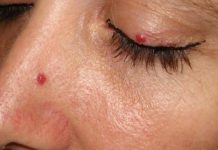
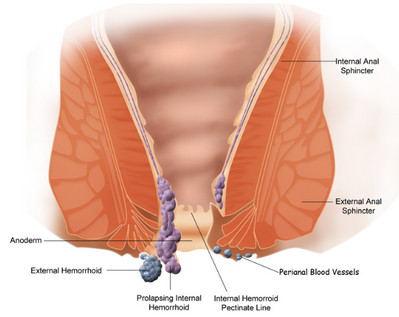
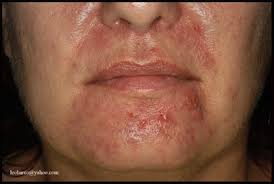

Is there a cure for dermatographia?
An elimination diet is one form of treatment. I wouldn’t say it’s an absolute cure. But, it helps.
How to find out the one food which is allergetic